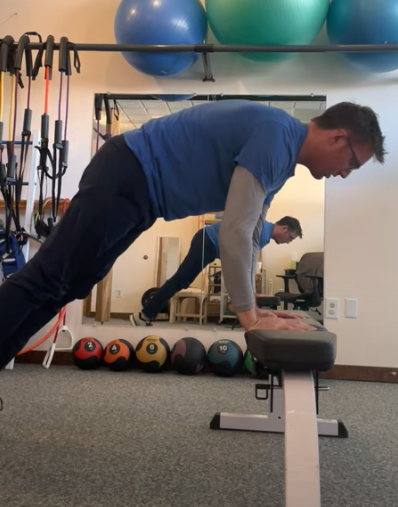The push-up is one of the basics of any strength program. It’s a versatile exercise. It can be scaled up or down for most any fitness level. The easiest way to do a push-up is against a wall. The hardest way to do a pushup is in a handstand. Somewhere in between those two points, the exercise can work well for most people.
Push-ups are common in the fitness and personal training world. However, they’re often poorly understood AND poorly performed by both fitness professionals and enthusiasts. I often see a deep lower back curve and and overly straightened spine. I see arms that don’t truly ‘reach’ during the movement. These are the usual suspects when it comes to troubleshooting.
I find it interesting that a push-up is really just a plank where you’re using your arms to move your body up and down. A common problem with planks and pushups is that people tend to overly protect their low back by locking it into a hard arch. This can be counterproductive for anyone with spinal conditions or back pain. When an exercise begins with a hard arch, it is easy to drop further into it as you fatigue, or if the intensity of the exercise is high. For this reason, I recommend “checking in” with an inhale at the top of each repetition. This should create a feeling of expansion in the front and back of the upper body. This indicates good control, posture and position. I will talk more about these cues on this link.
I cue people to reach their arms at the top of the exercise. The upper back should feel convex and rounded. If you inhale in this position, you should feel your back expanding as it fills with air. Hit this position and breathe in after every repetition to get all the benefits from this wonderful exercise! I will demonstrate a core crushing, arm building Push-Up on this link!
Phil DeNigris is certified in PRI, Personal Training and Bodywork and is available for One on One sessions to support your health and wellness goals.




